Would you rather have a knight or a bishop? There has always been a debate as to which is the stronger piece between the knight and the bishop.
Unfortunately, not even the strongest chess player can answer this question firmly (though he leans more towards the bishop!). But we can follow some general guidelines which can help us decide which chess piece will be stronger in the given position.
In this article, I’ll show you some studies and classics played by world champions to help you understand the guidelines much better.
Let’s first look at scenarios where the knight is preferable.
Where Knights Are Better Than Bishops
So when do knights reign supreme over bishops?
When the play is only on one side
Troitsky (Study) – 1924
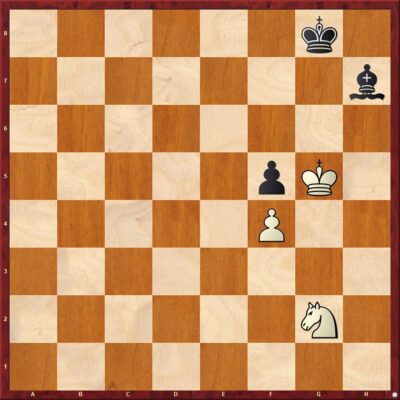
As we can see in the above position the action on the chessboard is only limited to the Kingside.
1.Kh6 White advances his king and then plans on activating his knight later on.
1…Kh8 2.Nh4 Kg8
Black does not have much choice and has to shuffle around with his king. If 2…Bg8 3.Ng6#.
3.Nf3 The knight starts his journey! 3…Kh8 4.Ne5
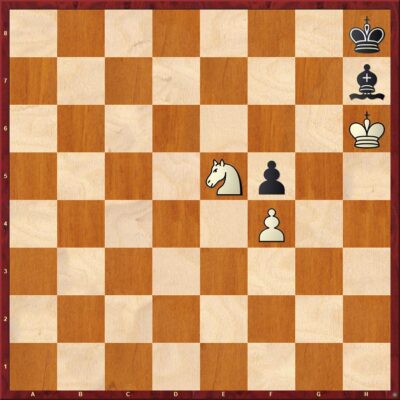
4…Kg8
If 4…Bg8 5.Ng6#
5.Nc6 Kh8 6.Ne7 Bg8 7.Ng6#
The play on one side suits the knight as it is a short range piece and can dominate the bishop in a small part of the chessboard.
When the position is of closed nature
Alekhine, Alexander – Yates, Frederick
London BCF Congress London (10), 1922
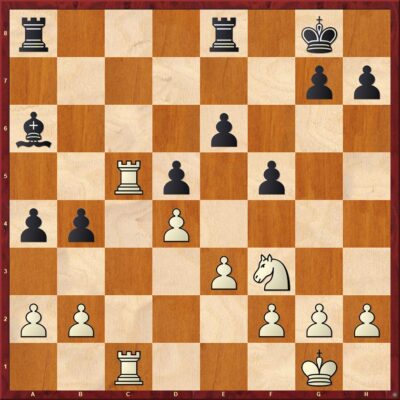
The knight is also preferable when the position is closed in nature, that implies that there are no (or almost none) open files or diagonals.
In the above position there are no open diagonals. There is the open c-file but White has complete control over the file.
Alekhine masterfully uses his knight to dominate the bishop. Play out the moves and you’ll appreciate the game yourself!
As we saw from the game, White’s knight on e5 was placed right in the centre controlling many important squares and dominating Black’s pieces. On the other hand the Black’s bishop wasn’t able to create any problems for White, since it was always stuck behind the pawn chain.
When the Knight has a Secure outpost
Fischer, Robert James vs Gadia,O – Mar del Plata, 1960
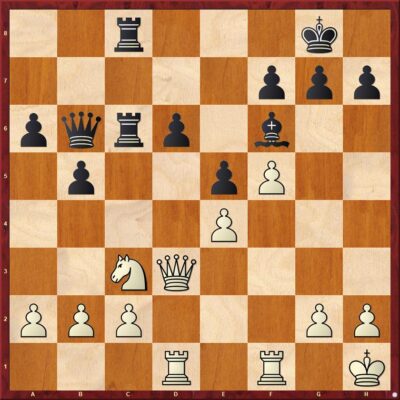
Another situation where the knight is preferable is when the knight has a secured outpost in the centre. In the above position the square d5 is a secure outpost for the knight as Black cannot attack it with any pawn forcing the knight to move back.
Let us see how the knight dominates after reaching the outpost.
19.Nd5 Qd8
If 19…Qd4 20.Nxf6+ gxf6 21.Qg3+.
20.c3 Be7 21.Ra1 f6
If 21…Bf8 22.a4 Rb8 23.axb5 Rxb5 (23…axb5 24.Ra7) 24.Rxa6 Rxa6 25.Qxb5.
22.a4 Rb8??
This is a blunder.
23.Nxe7+
And White wins the rook after 23…Qxe7 24.Qd5+ Kh8 25.Qxc6.
1–0
Enough of the knight, now let us see the other side of the coin.
When Bishops Are Preferable
When the play is on both sides of the chessboard
Averbakh (Study)
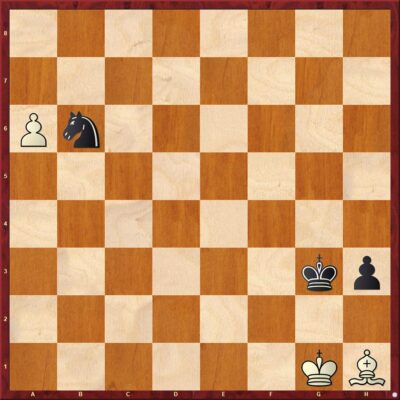
As the knight was able to dominate when the play is on one side of the board, generally the Bishop will have its say over the knight when the play is spread out all across the chessboard.
In the above position the knight is stuck to the defense of the a8 square as Black has to keep preventing White’s pawn from queening!
Let us see how the game progresses.
1.a7 Kg4 2.Kf2
On 2.Kh2, there follows 2…Kf4 3. Kxh3 Ke5 4.Kg4 Kd6 5.Kf5 Kc7 6.Ke5 Na8! 7. Bxa8 Kb6 with equality.
2…Kf4 3.Ke2 Kf5
If 3…Kg3 4.Ke3 Kh2 5.Bb7 Kg1 6.Kd4 h2 7.Kc5 and White wins!
4.Ke3 Ke5 5.Kd3 Ke6 6.Kc3 Kd6 7.Kb4 Kd7 8.Kb5 Kc7 9.Ka6 and White wins.
The bishop is a long range piece and from the above example we could see how the bishop influences the chess board.
When the position of open nature
Topalov,Veselin (2813) – Kramnik,Vladimir (2743)
World Championship Elista (9), 07.10.2006
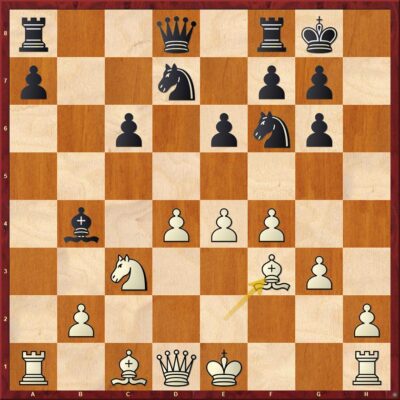
When the position is of open nature ( that is there are open files and diagonals) the Bishop is generally stronger than the knight.
In the above position, White has the potential to open up the diagonals for the bishop’s by playing either e4-e5 or d4-d5. It’s played between two former world champions, Topalov and Kramnik.
Let us see how the game progressed.
15.Bf3 Qb6 16.0–0 e5 17.Be3 Rad8 18.Na4 Qb8 19.Qc2 exf4 20.Bxf4
20…Qb7 21.Rad1
Notice how beautifully White’s pieces have coordinated.
21…Rfe8 22.Bg5 22…Be7 23.Kh1
A good move. White is not in a hurry and wants to play e4–e5 or d4–d5 at the most favorable moment.
23…Nh7 24.Be3 Bg5 25.Bg1 25…Nhf8 26.h4 26…Be7 27.e5 Nb8 28.Nc3
Ready for d4–d5 break.
28…Bb4 29.Qg2 29…Qc8 30.Rc1
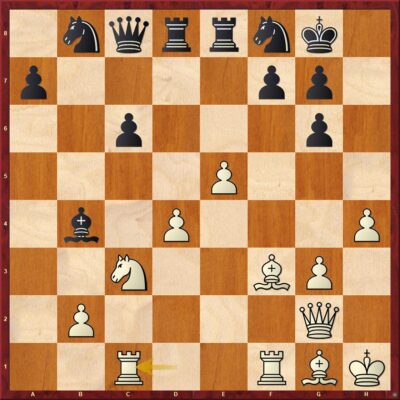
30…Bxc3?
This is a strategic surrender. Now White gets a very strong center.
30…Qb7 was better as it prevents d5 and keeps Black in the game. But already in a practical game, such moves are tough to find. Now, White slowly builds up the pressure. Thanks to his bishops and extra space, Black is tied down.
31.bxc3 Ne6 32.Bg4 Qc7 33.Rcd1 Nd7 34.Qa2 Nb6 35.Rf3!?
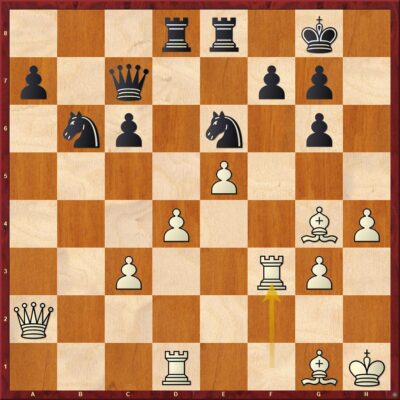
White is planning to pile up pressure on f7.
35…Nf8?
Instead of it, 35…c5 would have been more stubborn.
36.Rdf1 Re7 37.Be3 Nh7 38.Rxf7!
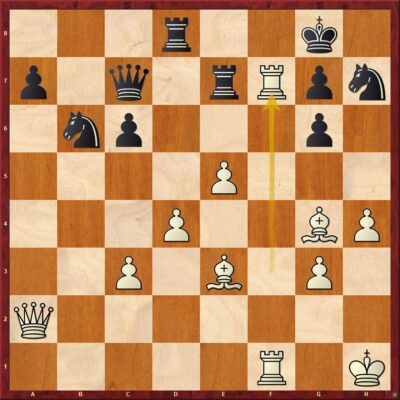
38…Nd5
If Black goes 38…Rxf7 39.Rxf7 Qxf7 40.Be6, and the pin wins it all! This is one advantage of having 2 bishops, you can dominate the play on the diagonals.
39.R7f3 1–0
Conclusion
As you saw, when it comes to knights vs bishops, there is no easy answer to which piece is stronger. Both the knight and the Bishop have their strengths and weaknesses. Every position is different and also there are many other factors which could influence which piece reigns supreme.
The ones given above should give you a good starting point to base your decisions on.
Note: This article has been written by Ojas Kulkarni, who’s a 2200+ Elo rated player.


